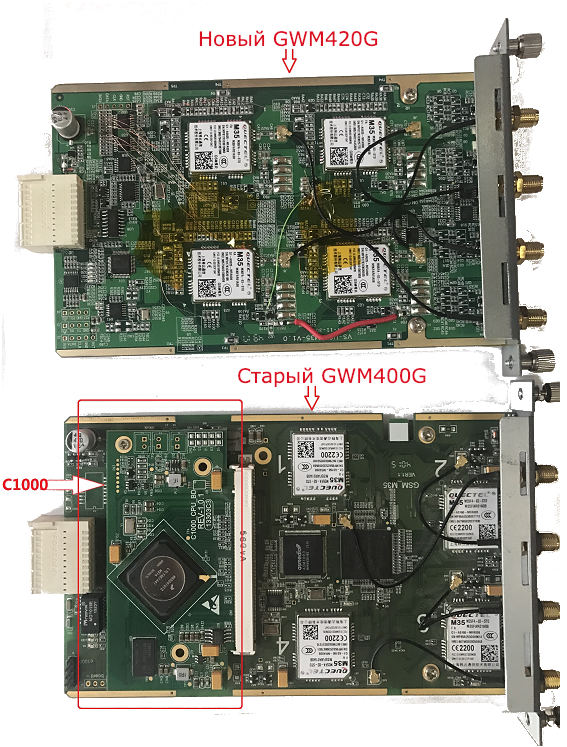New GSM Gateways from OpenVox

Asterisk is a terrific constructor. Want to build a small PBX for business? Take the Raspberry PI, roll the finished image on the USB flash drive, 10 minutes, and you already drive in the login with a password to your SIP phone and make the first call.
Want something more? We install free and clever FreePBX Distro, we get users, we add the necessary modules, and it turns out also quite a working version.
And if your company has money, you can choose for yourself one of the many paid commercial developments on Asterisk: Welltime, Switchvox, Askozia, or hardware PBX companies Grandstream, Yeastar, Zycoo and so on.
You are an ideal company if you can use only the SIP protocol for both external lines and internal connections. In practice, it is not always possible to completely abandon analog lines, E1 stream or SIM cards.
Open source software allows you to create low-cost and functional solutions. And today I would like to tell you about the new gateways of the Chinese company OpenVox
New generation
The 2018-2019 line gateways are also built on a modular architecture. For a workable solution, you need at least one chassis and one GSM module.
Currently, two chassis options are available:
1U - Model VS-GW1600 V2
It allows you to connect up to 5 external modules, and since each module allows installation of up to 4 sim cards, you can therefore use up to 20 simultaneous channels in combination.
- 2 10 / 100M LAN interface
- Up to 20 SMA-K outputs, small antenna supplied with modules
- Consumption up to 46 W / 220 Volt
- Weight 3.6 kg
- Dimensions 44 cm / 30 cm / 4.5 cm
and 2U - Model VS-GW2120 V2
Allows you to insert up to 11 external GSM / WCDMA / LTE modules, that is, up to 44 SIM cards or 44 simultaneous conversations.
- 2 10 / 100M LAN interface
- up to 44 SMA-K outputs, small antenna supplied with modules
- Consumption up to 88 W / 220 Volts
- Weight 6.2 kg without modules
- Dimensions 49 cm / 39 cm / 9 cm
Modules mounted inside the chassis support hot swap and there are three options:
| Module type | GSM vs-gwm420g | WCDMA - vs-gwm420w-e | LTE - vs-gwm420l-e |
| frequencies | gsm 850/900/1800 / 1900mhz | europe 900 / 2100mhz - umts; 900 / 1800mhz - gsm | emea lte fdd: b1 / b3 / b5 / b7 / b8 / b20 lte tdd: b38 / b40 / b41 wcdma: b1 / b5 / b8 gsm: b3 / b8 |
The most popular, of course, is the VS-GWM420G GSM module, suitable for you in 90% of cases. If you want to connect tele2 in Moscow and the region, then you will need VS-GWM420W-E.
The third VS-GWM420L-E module in Russia is still under-claimed. VoLTE is nice, of course, but most of the providers have few places where it is running and they have strict limitations on the model of the connected device.
After installing the necessary modules in the chassis, the gateway is controlled via the web interface. All popular codecs are supported: G.711A, G.711U, G.729, G.722, G.723, G.726 & GSM.
However, no one bothers to activate SSH, and get pure Asterisk 13.
Here you and AMI support, your own API, and IAX2. After all, is Belarus still blocking SIP in its networks? :)

What's new?
There are very few global changes, the same functions as in the previous generation, the former appearance and parameters. What served as a trigger for replacing a fairly reliable and popular solution?
Probably, as in any hardware, the life of the processor and / or its strapping is over. The manufacturer found it necessary to change the hardware and what do we see now?

The processor has moved from each module to the chassis. Previously, each such module worked as an independent system and had its own IP address. You needed to create a cluster if you wanted to control the device from one place. It was not always convenient, besides, several processors are always more expensive and less efficient.

Typical GSM module - vs-gwm420g
To simplify configuration and improve performance, the manufacturer installed one 4-core processor from Intel, and now any network card can take advantage of its more powerful resources.
Moreover, according to the manufacturer, these gateways have become significantly cheaper and with a multi-module structure they can even be a significant competitor to the well-known GoIP.

GSM Gateway Processor Module
In conclusion, I would like to answer the popular question in the comments: "Why do I need it?"
GSM gateway can be useful in the following situations:
- Reducing the cost of calls to mobile numbers. One of the lowest SIP tariffs for mobile is 1 ruble and 20 kopecks per minute. Here you can call for 10 kopecks or connect the tariff with unlimited calls at a very attractive price.
- free calls within corporate rates.
- sending free SMS via the device’s web interface or via API
- The function of receiving incoming SMS to email.
- you are in Crimea and you need a SIP number.
- and finally termination. Legislatively more often prohibited, but I will not hide - is still used. The cost of a call to a mobile in Belarus, Moldova or Ukraine from 15 to 25 rubles per minute. When installing such a gateway - at the price of domestic calls in the country. Penny.
If you have a previous-generation Openvox GSM gateway, unfortunately, backward compatibility could not be maintained. The manufacturer promises the availability of old modules for some time, while their cost is significantly reduced. Maybe right now it is worth buying a few in reserve?
The manufacturer has made the web interface available so that you can get acquainted with the functionality of the device, but it is temporarily unavailable, probably due to the long New Year holidays. Just in case, I will leave it here, come to life soon:
DEMO
login: admin
password: admin
